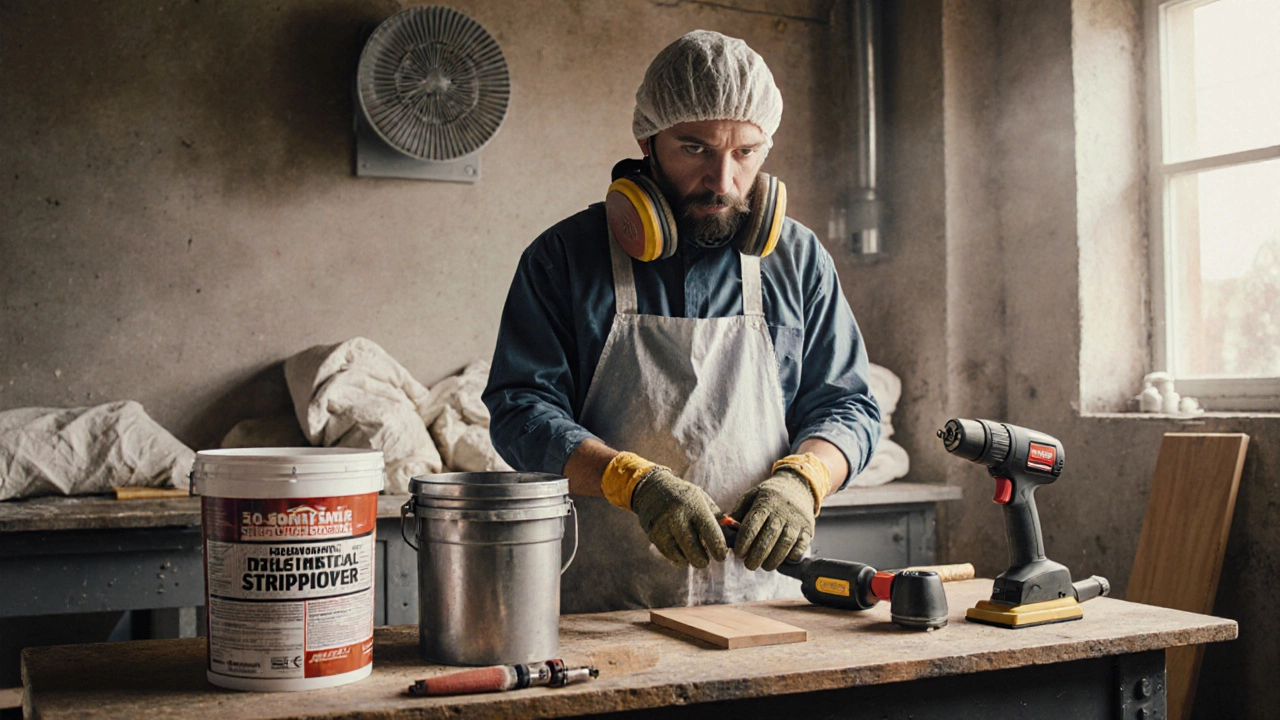Professional Paint Remover: How to Choose, Use, and Stay Safe
When working with professional paint remover, a specially formulated product designed to strip paint efficiently without damaging the underlying surface. Also known as paint stripper, it typically relies on a solvent, chemical agents such as methylene chloride, citrus terpenes, or biodegradable surfactants that break down paint binders and demands proper safety equipment, protective gloves, goggles, respirators, and adequate ventilation to guard against fumes and skin contact. Choosing the right remover influences surface preparation, reduces rework, and keeps the workspace safe.
Key Considerations for Using Professional Paint Removers
First, match the remover to the paint type—oil‑based, latex, epoxy, or enamel. Oil‑based paints often need stronger solvents, while water‑based coatings respond well to milder, eco‑friendly formulas. Second, think about the substrate; wood, metal, and drywall each react differently to chemicals. A gentle, citrus‑based stripper works great on delicate wood, whereas a fast‑acting methylene chloride blend suits metal frames. Third, factor in environmental and health concerns. Biodegradable strippers use plant‑derived solvents, lower VOC emissions, and still deliver a clean break. Finally, assess the work area’s ventilation. Even low‑odor products benefit from fresh air flow or localized exhaust fans to keep airborne particles below safety thresholds.
Applying a professional paint remover follows a simple but disciplined routine. Start by cleaning the surface—dust and grease can block the chemical’s action. Then, generously coat the area using a brush, roller, or spray, ensuring even coverage. Most products specify a dwell time; during this period, the solvent penetrates the paint layer, softening it for easy removal. Check the progress regularly; a successful strip reveals a glossy, paint‑free surface without excessive bubbling. Use a plastic scraper to lift the softened paint, working in the direction of the grain for wood to avoid gouging. If residue remains, a second light coat can finish the job. After stripping, neutralize the surface with water or a mild cleaner, then let it dry completely before repainting or refinishing.
Safety is non‑negotiable. Always wear chemical‑resistant gloves—nitrile offers good protection against most solvents. Goggles prevent splashes from reaching the eyes, and a half‑face respirator with organic vapor cartridges guards against inhalation of fumes, especially in confined spaces. Keep a fire extinguisher nearby if you’re using flammable solvents, and never mix different remover brands—they can react unpredictably. Proper disposal matters too; many solvents are hazardous waste and require collection at a certified facility. By following these steps, you’ll avoid common pitfalls like surface damage, lingering odor, or health hazards, and you’ll achieve a clean, ready‑to‑finish surface.
Below you’ll find a curated list of articles that dive deeper into each of these areas—from choosing the right eco‑friendly stripper to mastering the perfect application technique. Whether you’re prepping a vintage chair, renovating a kitchen cabinet, or stripping an industrial metal panel, the insights here will help you pick the right product, stay safe, and get the job done right.
